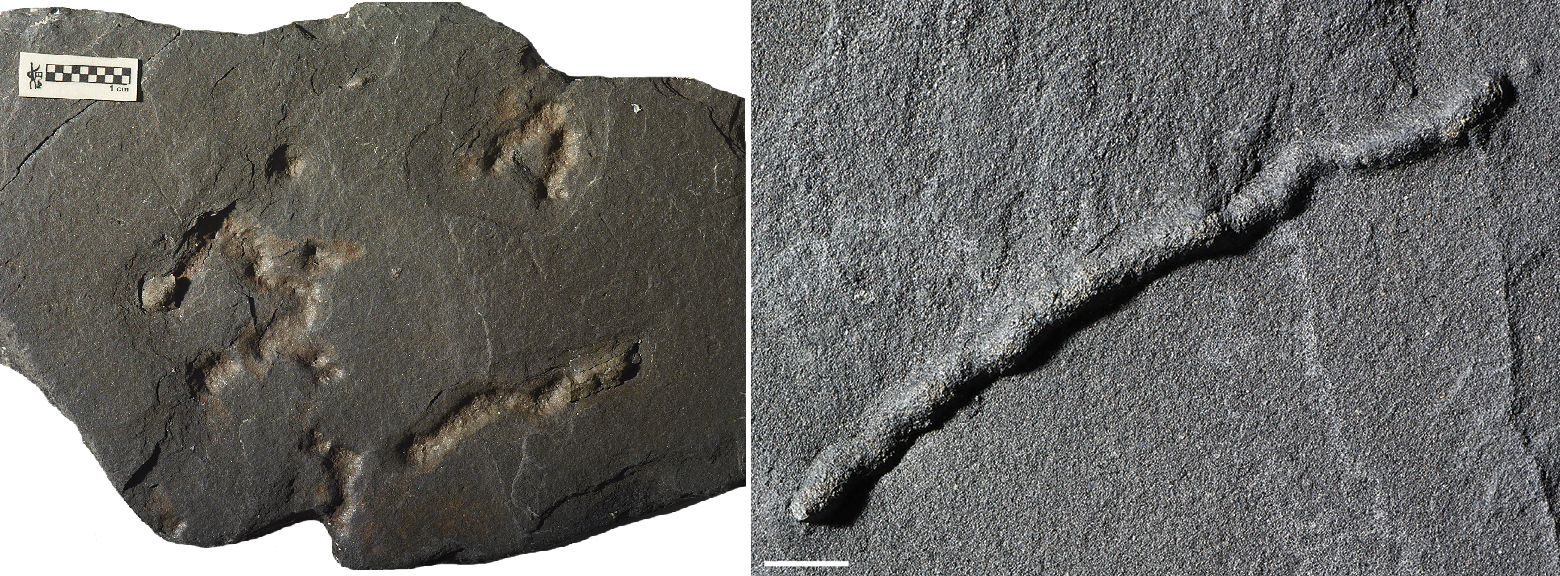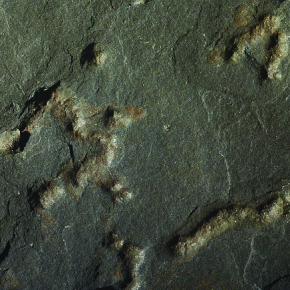
Discovery of the oldest evidence of mobility on Earth
An international and multi-disciplinary team coordinated by Abderrazak El Albani at the Institut de chimie des milieux et matériaux de Poitiers (CNRS/Université de Poitiers) has uncovered the oldest fossilised traces of motility. Whereas previous remnants were dated to 570 million years ago, this new evidence is 2.1 billion years old. They were discovered in a fossil deposit in Gabon, where the oldest multicellular organisms have already been found.1 These results appear in the 11 February 2019 edition of PNAS.
- 1Nature, 2010 and PLOS ONE, 2014.
A few years ago, geologist Abderrazak El Albani and his team at the Institut de chimie des milieux et matériaux de Poitiers (CNRS/Université de Poitiers) discovered the oldest existing fossils of multicellular organisms in a deposit in Gabon. Located in the Franceville Basin, the deposit allowed scientists to re-date the appearance of multicellular life on Earth to 2.1 billion years – approximately 1.5 billion years earlier than previously thought (600 million). At the time, researchers showed that this rich biodiversity co-occurred with a peak in dioxygenation of the atmosphere,2 and developed in a calm and shallow marine environment.
In this same geological deposit, the team has now uncovered the existence of fossilised traces of motility. This shows that certain multicellular organisms in this primitive marine ecosystem were sophisticated enough to move through its mud, rich in organic matter.
The traces were analysed and reconstructed in 3D using X-ray computed micro-tomography, a non-destructive imaging technique. The more or less sinuous structures are tubular, of a generally consistent diameter of a few millimetres, and run through fine layers of sedimentary rock. Geometrical and chemical analysis reveals that they are biological in origin and appeared at the same time the sediment was deposited.
The traces are located next to fossilised microbial biofilms3 which formed carpets between the superficial sedimentary layers. It is plausible that the organisms behind this phenomenon moved in search of nutritive elements and the dioxygen, both produced by cyanobacteria.
What did these living elements look like? Though difficult to know for certain, they may have been similar to colonial amoebae, which cluster together when resources become scarce, forming a type of slug which moves in search of a more favourable environment.
Until now, the oldest traces of recognised movement were dated to 570 million years ago; an estimate which appeared to be confirmed by the molecular clock4 . Evidence of motility found in rock that is 2.1 billion years old raises new questions regarding the history of life: was this biological innovation the prelude to more perfected forms of movement, or an experiment cut short by the drastic drop in atmospheric oxygen rates which occurred approximately 2.083 billion years ago?

Previously, the oldest traces of this kind found dated to approximately 600 million years ago: the Ediacaran period, also characterised by a peak in dioxygen and a proliferation in biodiversity.
© A. El Albani / IC2MP / CNRS - Université de Poitiers

The tubes are filled with pyrite crystals (generated by the transformation by bacteria of biological tissue) found in layers of clay minerals.
Parallel horizontal layers are fossilised microbial mats.
© A. El Albani & A. Mazurier / IC2MP / CNRS – Université de Poitiers
3D animation : microtomographical reconstruction with a transparent view of internal structures, and a sequence of virtual cross-sections of the sample.
In addition to the Institut de chimie des milieux et matériaux de Poitiers (CNRS/Université de Poitiers), the team comprised members of the following French laboratories:
- Laboratoire d'océanologie et de géosciences (CNRS/Université du littoral Côte d’Opale/Université de Lille),
- Institut de physique du globe de Paris (CNRS/IPGP/Université Paris Diderot),
- Paris-based team of the « Histoire naturelle de l'Homme préhistorique » laboratory (CNRS/MNHN/Université de Perpignan Via Domitia),
- Laboratoire d'hydrologie et de géochimie de Strasbourg (CNRS/Université de Strasbourg),
along with colleagues from the universities of Alberta and Saskatchewan (Canada), the Swedish Museum of Natural History (Sweden), University of California, Riverside (USA), Cardiff University (UK) and the Nordic Center for Earth Evolution (Denmark).
To find out more: Life Was Already Moving 2.1 Billion Years Ago
Organism motility in an oxygenated shallow-marine environment 2.1 billion years ago, Abderrazak El Albani, M. Gabriela Mangano, Luis A. Buatois, Stefan Bengtson, Armelle Riboulleau, Andrey Bekker, Kurt Konhauser, Timothy Lyons, Claire Rollion-Bard, Olabode Bankole, Stellina Gwenaelle Lekele Baghekema, Alain Meunier, Alain Trentesaux, Arnaud Mazurier, Jeremie Aubineau, Claude Laforest, Claude Fontaine, Philippe Recourt, Ernest Chi Fru, Roberto Macchiarelli, Jean-Yves Reynaud, François Gauthier-Lafaye, Donald E. Canfield, PNAS, 11 February 2019. DOI: 10.1073/pnas.1815721116


